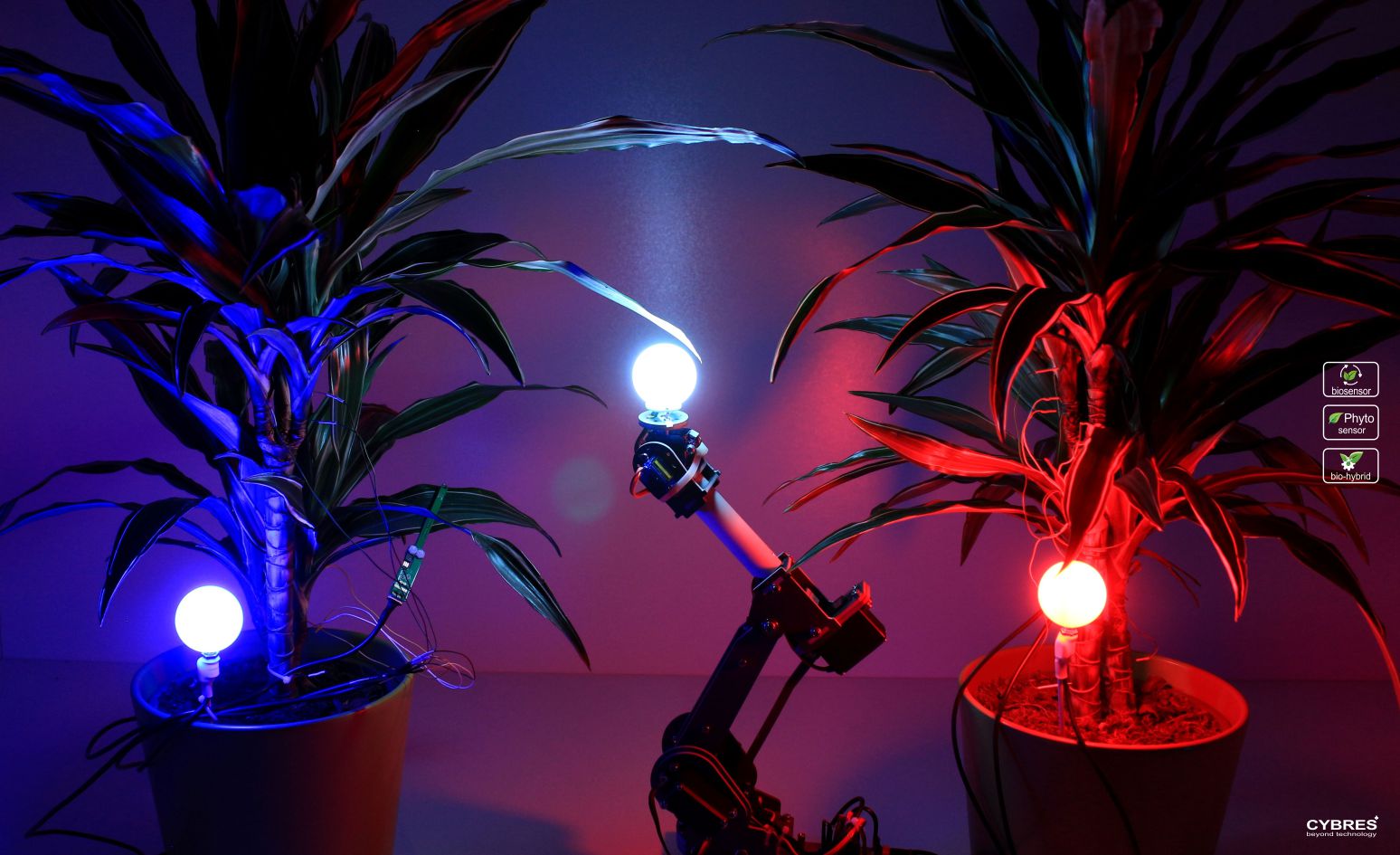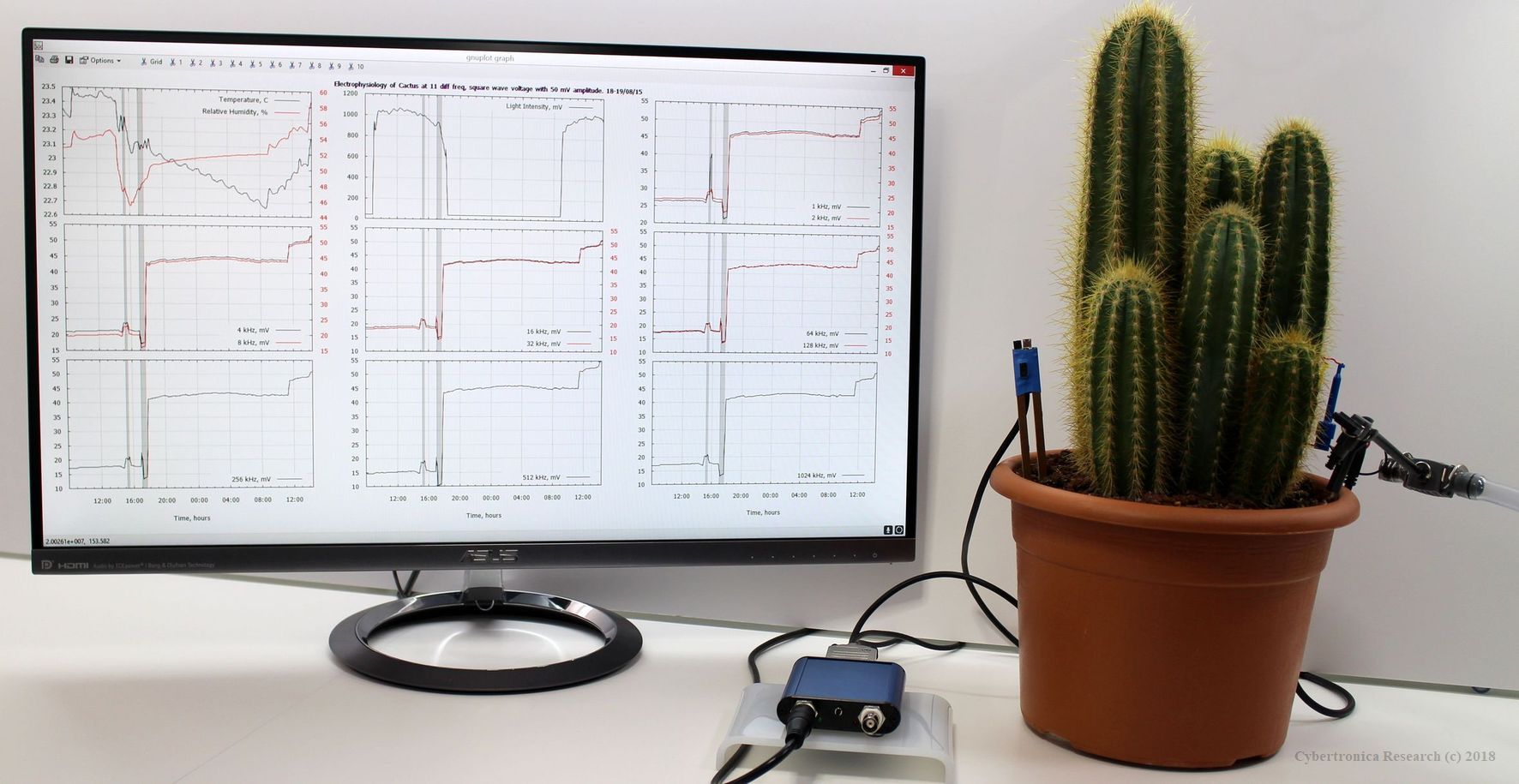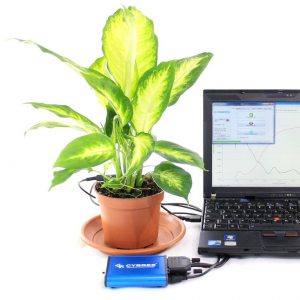The system measures physiological and electrophysiological parameters of phyto-objects (productive and home plants, herbs, shrubs, trees). In addition to phytosensing, the device can perform phytoactuation, i.e. control light, irrigation or fertilization based on biofeedback from plants. Measured parameters (depending on used electrodes):
- Biopotentials (2 channels, Ag99 needles), used for:
- measuring fast electrical response to different stimuli
- tracking periodical activities of the plant
- interactions with plants based on e.g. mechanical or thermal stimuli
- other bio-electric approaches
- Tissue impedance sensors (2 channels, Ag99 needles), used for:
- measuring tissue impedance at different frequencies
- frequency shift in tissue response
- electrochemical impedance spectroscopy (to detect low-/high- ionic fluids, such as nutrients and photosynthates)
- electrochemical sap flow measurements (in terms of tissue fluid content)
- electrical stimulation
- other ionic interfaces to organic/living materials/objects
- Environmental parameters: 3D accelerometer/magnetometer, EM power meter (450kHz-2.5GHz), air temperature and pressure
- Supported external sensors: CO2, O2, ion-selective electrodes, any sensors with analog or I2C interface (require hardware/software adaptation)
Functions with two channels enable performing high-resolution differential measurement. Real-time data (with time stamps) can be recorded into the internal flash memory (optional), transmitted via USB or (with optional mini PC in pro-version) are accessible via WiFi/Ethernet/Bluetooth on any mobile device/PC. Data can be written as html-pages for the online data plot in internet. The needle- or surface- electrodes are used to receive signals from plants. The system is fully autonomous and can operate without user intervention. In addition to phytosensing, the device can also perform phytoactuation (with power management module). This functionality is useful for water/air preparation, controlling irrigation or phytolight, optimizing plant growth based on biofeedback.
Applications
This system is designed for professional and amateur purposes, as a tool for biological laboratories, and for plant enthusiasts. In the professional use this system can be employed as phyto- or bio-sensors in vertical farms, controlled environment agriculture or hydroponics. Scientific applications include bio-hybrid and robotic systems, systems of mixed reality, smart home applications. Phytosensors can be used in artistic installations for interaction with plants, various entertainment systems. Additional algorithms for data analysis and actuation can be easily implemented with the provided script language. In amateur applications the system has a variety of potential usages, for example, in school or university courses on biology, for studying ‘the electrical language of plants’, or to carry out experiments in the context of Cleve Backster and Peter Tompkins works with the ‘Secret life of plants’.
Version with electrophysiological electrodes
In this version, users receive access to all electrophysiological functions, can record, analyse and perform phytoactuation based on electrical and electrochemical responses.
The delivering set includes:
- The MU3.4 module with integrated sensors (3D accelerometer/magnetometer, EM power meter (450kHz-2.5GHz), air pressure) and USB 2.0 connectivity;
- Differential biopotential/tissue impedance electrodes (material Ag99);
- Software;
- USB 2.0 cable;
- Short user manual in different languages;
- Full user manual (download from web);
- Plastic case for measurement equipment.
Optional:
- Stainless steel electrodes for trees/shrubs;
- IP65/66 water protected package for outdoor applications;
- Power management module (for controlling light, irrigation, fertilization);
- Mini-PC with Intel Celeron J4125 (Win10 PRO OS) for advanced connectivity for long-term autonomous operation;
In all configurations, the device provides access to all obtained data and allows their algorithmic, mathematical and statistical analysis. This mode is useful for optimization of plant’s productive functionality, for using plants as biosensors, including weak signals, integration into vertical farms or controlled environment agriculture as well as for scientific research with systems of mixed reality, smart home and AI applications. In particular, it can be used to explore the learning and adaptation processes in vegetable and bio-hybrid systems based on plants.
Product description (with documentation, user manuals and videos)











